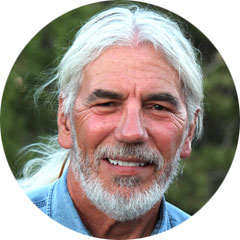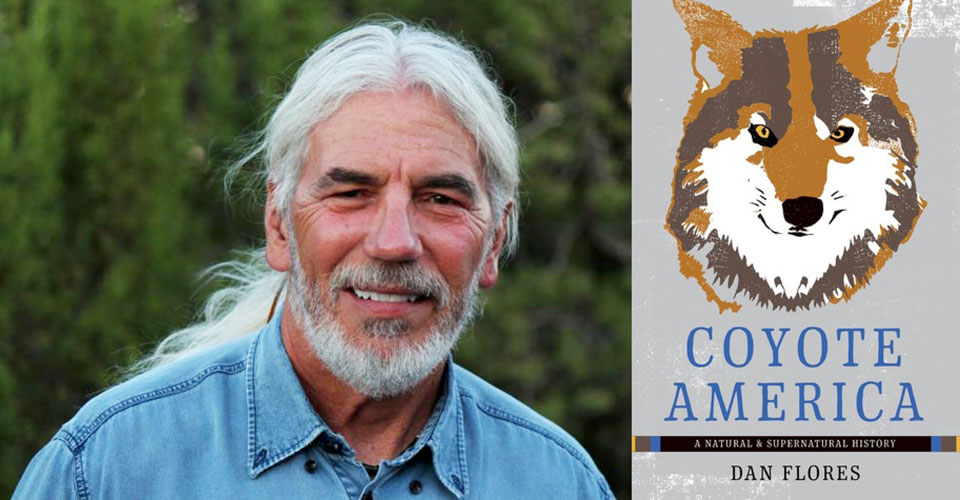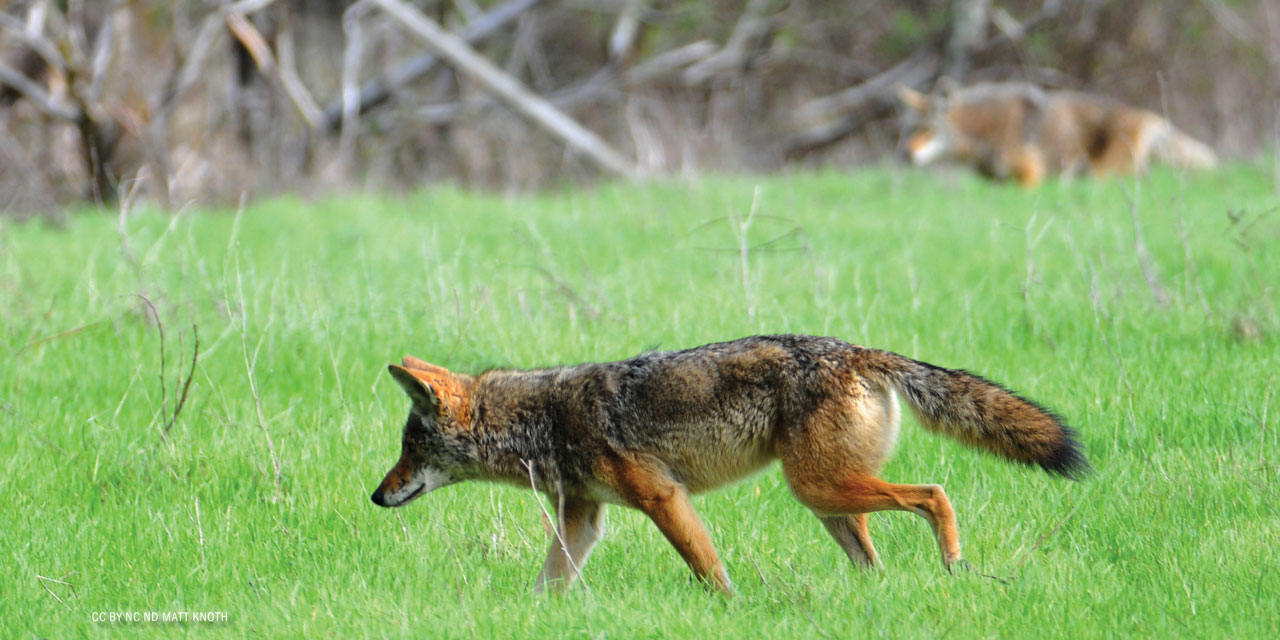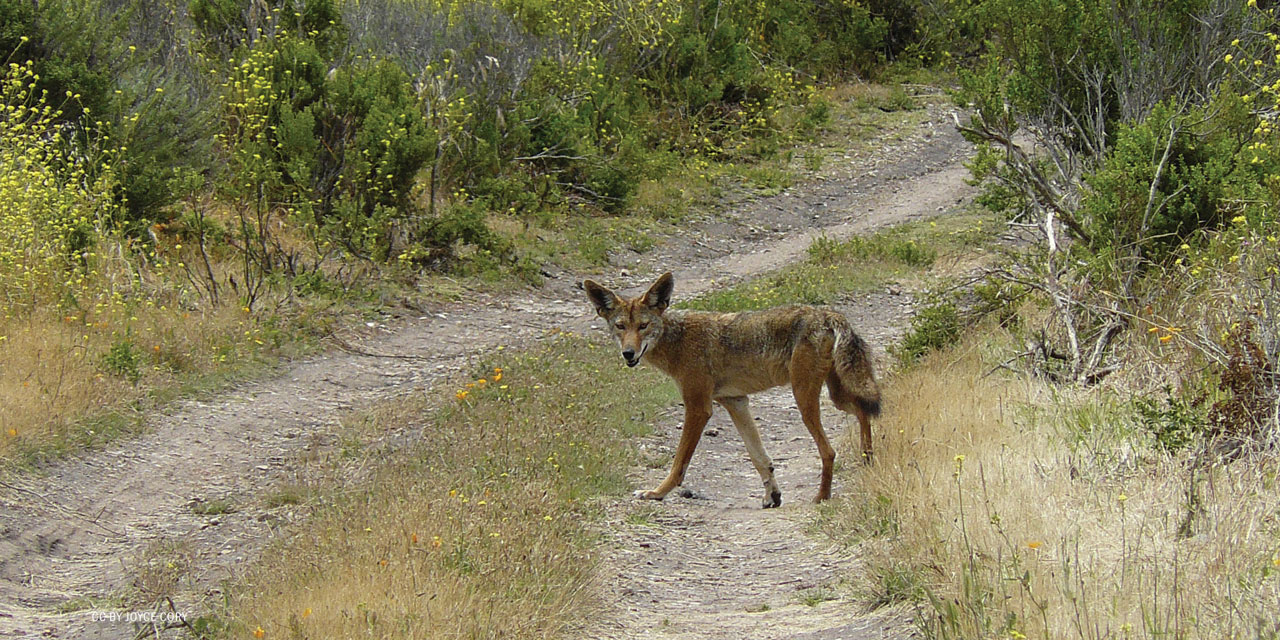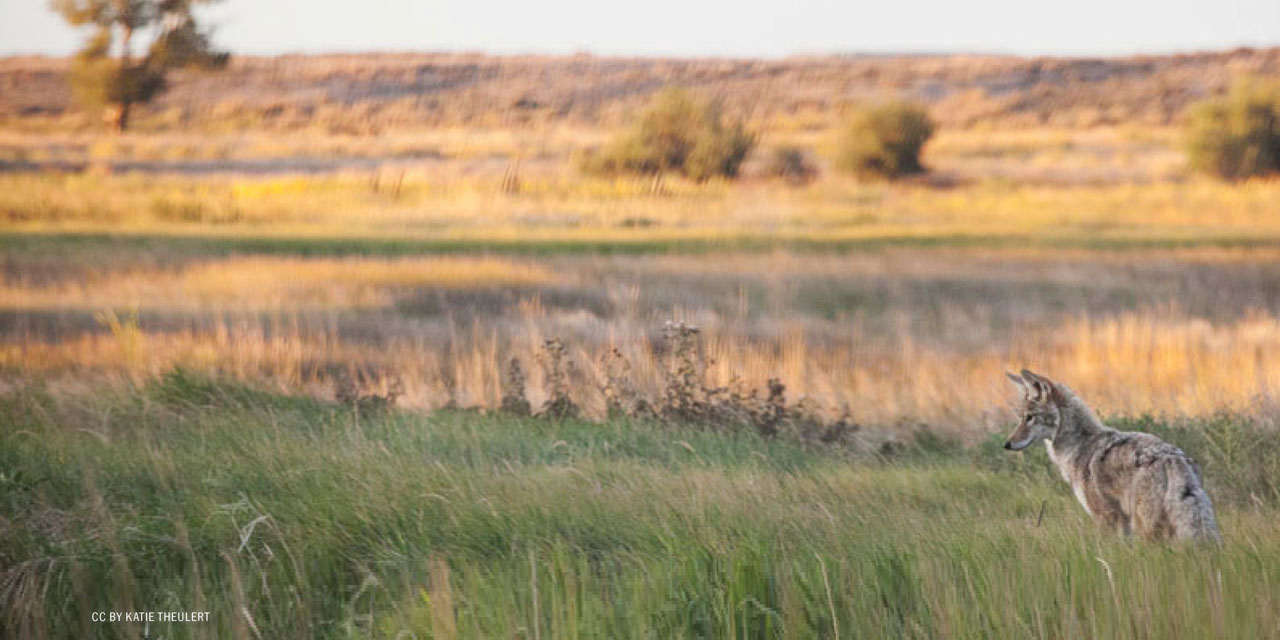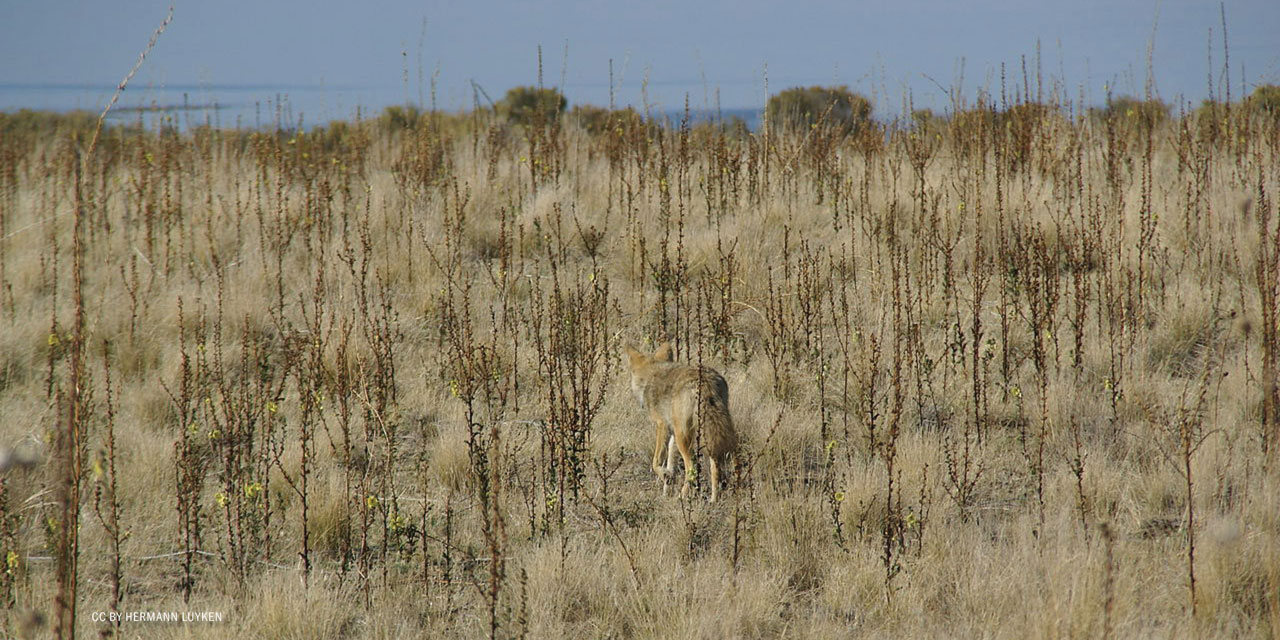Coyote America: Author Dan Flores Speaks about North America’s Native Song Dog
As I relate in Coyote America, the book’s origins in my mind probably go back to my childhood in Louisiana in the 1960s, when coyotes were colonizing the South and East. Prepped to be fascinated by wild canids by the first of several Walt Disney films about coyotes, I began encountering coyotes and coyote-red wolf hybrids in my home woods and river valleys. Living in places like West Texas, Montana, and now New Mexico as an adult, I have always been surrounded by coyotes. As intriguing experiences with them piled up over the years, and as the return of wolves became a crucial environmental and political issue in modern America, I think my decades-long coyote fascination meant it was only a matter of time until I began to research and write a full-scale biography of the animal that had so captivated me as a young teenager.
Among the questions I’ve gotten about Coyote America from interviewers and at bookstore events, here are a few common ones, along with my responses:
Tell us a bit about the biography of the coyote. What are its origins?
As far as we can tell at the moment, using the sciences associated with fossil analysis, genetics, morphology, and behaviors, the coyote’s origins spring from those of the Canidae family, which evolved in western North America 5.3 million years ago. Many other species of canids – jackals, wolves, and wild dogs – spread around the globe via the land bridges connecting America to Europe and Asia. But coyotes never left and they emerged as a distinctive species about a million years ago. Physically, they most resemble jackals, especially the golden jackal. They’re about the same size as golden jackals, from which coyotes separated about 800,000 years ago, and there’s only about a 4-percent genetic difference between them, about the same as between us and orangutans.
The coyote featured prominently in Native American mythology. Why? How was it represented?
We’ve traditionally thought of the coyote as a classic trickster, a figure found in the stories and mythologies of Paleolithic (and later) peoples around the world. I argue in Coyote America, though, that in some respects the trickster assumption does a disservice to the role the coyote actually came to play in Native American folktales. Not only did western Indians select the coyote, among all the animals available to them, as a deity responsible for the creation of the world, he also functioned as an avatar – a stand-in for humans in the world – whose real function was to instruct humans about the foibles of human nature. The hundreds of stories about Coyote make up the oldest literary canon of our continent. In many of them, he certainly sometimes plays tricks, but the real message is about why the tricks work. In these stories, Coyote isn’t a god of perfection, in the mold of a Jesus figure, but a deity who represents the full suite of human traits, good and bad. So the stories are really about exposing various elements of human nature and instructing humans, often through a kind of humorous reverse example, of the proper way to behave towards each other and the world. It seems to me that many of these coyote lessons are pretty critical in our 21st-century world, and thanks to their preservation by native peoples, folklorists, and countercultural poets of the 20th-century West Coast, we still have many of these grand – and ancient – stories available to us.
Lewis and Clark were the first white Americans to encounter the coyote. What did they make of it?
Until the late 19th century, coyotes rarely colonized east of the Mississippi, so Lewis and Clark never saw one until they got to the middle Missouri River and the Great Plains, when they wrote in their journals that they were seeing some new kind of fox. But once they shot one and looked at it up close, they realized this was no fox but some kind of wolf. They named it the “prairie wolf,” which is also the name brought into Western science when Thomas Say officially introduced it as Canis latrans in the early 1820s. The animal was still called prairie wolf in some circles a century later. Because the coyote was a distinctly American animal, Europeans brought with them no preconceptions about it the way they did with wolves or bears. So, much of the coyote’s biography in the 19th century centered around Americans attempting to understand this strange new canid.
“Coyote” is an old Aztec name for the animal that goes back at least a thousand years. The name got taken into the American Southwest with Spanish settlers, who brought Mexican Indians with them to settle places like Santa Fe. When Americans began arriving in the Southwest in the 1820s to 1840s, they encountered people who called prairie wolves “coyotes.” Over time, Americans replaced the name prairie wolf with coyote, pronounced either with three syllables after the Spanish version, or in a simplified two syllables.
One of the chief culprits of the coyote’s negative image was Mark Twain. How did this happen?
Twain’s classic 1870s book, Roughing It, gave American culture a way to think about the coyote. In a three-to-four-page comic rant about the animal, Twain portrayed the animal, which had functioned as a deity for probably 10,000 years, as a cowardly, despicable little wretch that lived off carrion. “The meanest creatures despise him, and even the fleas would desert him for a velocipede,” he told his readers. Twain set the stage for ensuring a century of hatred, and since no one bothered to conduct any scientific research on the animal until the 1930s, that hatred became a kind of unthinking, knee-jerk reflex. By the 1920s, even a magazine like Scientific American was referring to the coyote as “the original Bolshevik,” a characterization that provided an almost patriotic rationale for shooting them on sight.
Your book argues that coyotes became “the victims of a crusade … that surpassed any other in terms of the range of killing techniques and cruelty.” How did this happen, and why?
A government agency called the Bureau of Biological Survey, which became the federal solution to the so-called “predator question,” began by focusing mostly on wolves, because that was the animal that the livestock industry wanted to eliminate. By the 1920s, it had managed to pretty much extirpate wolves in North America, at which point it turned to the coyote, deciding that for the 20th century this was “the archpredator of our time.”
The Biological Survey created a lab it named the Eradication Methods Laboratory, which began working on various kinds of poisons, strychnine at the outset, to wipe coyotes off the face of the continent. And, in 1931, Congress passed a bill that gave the agency $10 million over a decade to do exactly that. What ensued was the lab’s invention of several new poisons, including 1080, and the most epic taxpayer-funded campaign of persecution against any animal in North American history. In one nine-year period between 1947 and 1956, the bureau killed approximately 6.5 million coyotes in the American West, using blanket poisoning, sometimes with as many as three to four million poison baits out at a time.
One of the remarkable things about this campaign is that when it was launched, there had been no scientific studies of coyotes at all. No one had any idea what they ate. The hate campaign just assumed coyotes took down the classic game species – mule deer, pronghorns, bighorn sheep – along with livestock like sheep and calves. The ecologists and mammalogists of the age quickly stepped up to oppose this war of extermination, and when trained biologists like the Murie brothers began to study coyotes, they discovered that their effect on the world was largely beneficial to humans, that coyotes actually ate rodents, rabbits, some carrion, but that they had almost no impact on the large game animals the bureau had been arguing was their chief prey. The illogic of coyote hatred meant that federal and state campaigns against them simply ignored the science, and have largely continued to do so into the present time.
One of the most fascinating aspects of the coyote story is its survival under pressures that doomed wolves and so many other American animals. How did they do it?
Coyotes co-evolved alongside larger canids like wolves, which often persecuted and harassed them and killed their pups. As a result, natural selection bequeathed them with adaptive strategies for surviving under persecution. Both jackals and coyotes developed an unusual trait that biologists call fission-fusion adaptation; it’s a rare survival strategy that we human beings also evolved, one of the many ways in which coyotes and humans mirror one another. In coyote terms, fission-fusion enables them to function both as pack predators and as singles and pairs. When they’re persecuted, they tend to abandon the pack strategy and scatter across the landscape in fission mode, which enables them to colonize widely. In effect, then, the extermination campaign was one of the factors that produced modern coyote Manifest Destiny and spread them in every direction so that they now range across all of North America.
Another of their responses to pressure is to produce larger litters. Their howls function in many ways, but one function is to create a kind of census of surrounding coyote populations, and if their howls are not answered by other packs, the result is a biological response that produces large litters. The normal size is five to six pups, but when external forces suppress their populations, their litters can reach 12 to 16 pups. Leave coyotes alone and their numbers stabilize, but pressure them and they colonize and go into overdrive to keep their numbers up. Researchers eventually came to realize that federal and state agents could reduce coyote numbers as much as 70 percent year after year after year without ultimately affecting the size of the population.
I’d hasten to add that as smart as coyotes are, none of these responses represents conscious decisions by coyotes. If there is little competition for resources because wolves or humans have suppressed coyote populations, they’re then able to raise a larger percent of their pups to adolescence and adulthood. And they have the flexibility, if breeding alpha females are killed, for young beta females to come into estrus and have litters. Their fission-fusion response – especially the fission component where they scatter as pairs and individuals – seems to be triggered by harassment.
Wolves didn’t evolve this ability and thus were far easier for us to extirpate. Coyotes, though, became an endless frustration and mystery for their persecutors.
American popular culture played a surprising role in a new stage in the coyote’s biography. Tell us about how your book relates Wile E. Coyote and Walt Disney’s films to changing attitudes about coyotes.
As I describe in Coyote America, I lived through the Age of Ecology in the 1960s and 1970s and witnessed how attitudes toward these animals changed enough to persuade Richard Nixon to issue a presidential proclamation banning the further use of poisons on the public lands of the West. And I realized that along with Rachel Carson’s classic 1962 anti-poison bestseller, Silent Spring, pop culture had done a lot to sway the way late 20th-century Americans thought about coyotes.
Walt Disney, for one, changed a generation with six films starring coyotes in the 1960s and 1970s, beginning with a film titled The Coyote’s Lament, which told the coyote’s side of the story in the war against it. But for many of us, the most famous coyote in the world from the 1950s into the 1990s was Wile E. Coyote, the cartoon coyote created by animator Chuck Jones for Warner Brothers Studios. Wile E. not only served as a modern coyote avatar, he finally gave us a sympathetic coyote character in our lives who taught us all kinds of very human reactions to things like obsession, humiliation, even being careful consumers of corporate whiz-bang technology. Add the literary productions of the West Coast counterculture, which reintroduced the Native American deity Coyote to the modern world, and we get what I call in the book a kind of “coyote consciousness” for our own time.
Are coyotes still being killed? And what sort of numbers are we talking about?
While poisoning got curtailed in the 1970s, and the Endangered Species Act of 1973 meant we would never again try to exterminate coyotes, the Biological Survey’s successor – Wildlife Services – turned to aerial gunning in its continued war against predators on behalf of the livestock industry. Even though the sheep industry in America is a dwindling shadow of its former self, Wildlife Services continues to kill 60,000 to 80,000 coyotes a year on behalf of the livestock industry. Although science continues to show that coyotes are no threat to game populations, and killing them likely has little or no positive effects for the livestock industry, the killing continues, propagated as well by state agencies. Many Americans shoot coyotes on sight, and of course there’s the completely indefensible practice of coyote contest hunts, for prizes and bets, a focus of Project Coyote, which is engaged in a state-by-state effort to outlaw the practice. The result is that for mostly ideological reasons we still kill half-a-million coyotes a year.
Coyotes are much in the news now because of their arrival in most of America’s big cities and because of the emergence of an animal in the East often called a “coywolf.” Why is this happening and are coyotes a threat to us?
The truth is that coyotes have been living in and around human towns and settlements for at least a thousand years, probably longer. But in the early 20th century, with wolves dwindling and the war against predators dispersing coyotes, they found that dog pounds and dogcatchers had removed the competition in modern cities. So coyotes became a feature of life everywhere from Los Angeles to Chicago to their newest frontier, New York City. In cities, no one is trapping, poisoning, or shooting them. In Chicago, some coyotes are now living to 12 and 13 years, learning how to avoid roiling traffic, and doing very well living among us, dining on the rats and mice that our presence produces in such abundance.
As they have moved east they have also encountered what we believe are two remnant species of American wolves, the red wolves of the South and the eastern wolves of upper New England and eastern Canada. Unlike the situation with gray wolves in the West, with which coyotes do not hybridize, there are no behavioral barriers to their interbreeding with these more closely related American wolves. So they’re creating a new predator for eastern America, the “coywolf,” which is about 70 percent coyote but also has wolf genes and even the genes of domestic dogs. I think it’s an exciting development.
For that matter, once we humans alter our behaviors – stop letting our cats roam loose or leaving dog food in the yard – I think urban coyotes are a wonderful and exciting development for modern America. The animals don’t carry rabies, and in all of continental history there are only two unusual instances where coyotes have killed a human. The coyote biography demonstrates full well that resistance to them is futile – they are here among us and that won’t change. But beyond having little choice in the matter, having these small wolves trot through our yards and down our streets is a wonderful opportunity to experience the ancient American wild right outside our doors. If we know the coyote’s biography, this animal offers us a singular chance to understand where we are and how life in America has functioned for millions of years. The coyote affords us a unique opportunity for understanding and connection.
You can learn more by reading an interview with author Dan Flores by Project Coyote Science Advisory Board Member Marc Bekoff and a recent op-ed Dan published in The New York Times, as well as this coverage of Dan’s research from WBUR in Boston, The Christian Science Monitor and National Geographic.
For more information about coyotes and Project Coyote’s efforts to protect them in human-populated areas, visit our Coyote information and Coyote Friendly Communities pages. And learn about Project Coyote’s Reforming Predator Management program.


